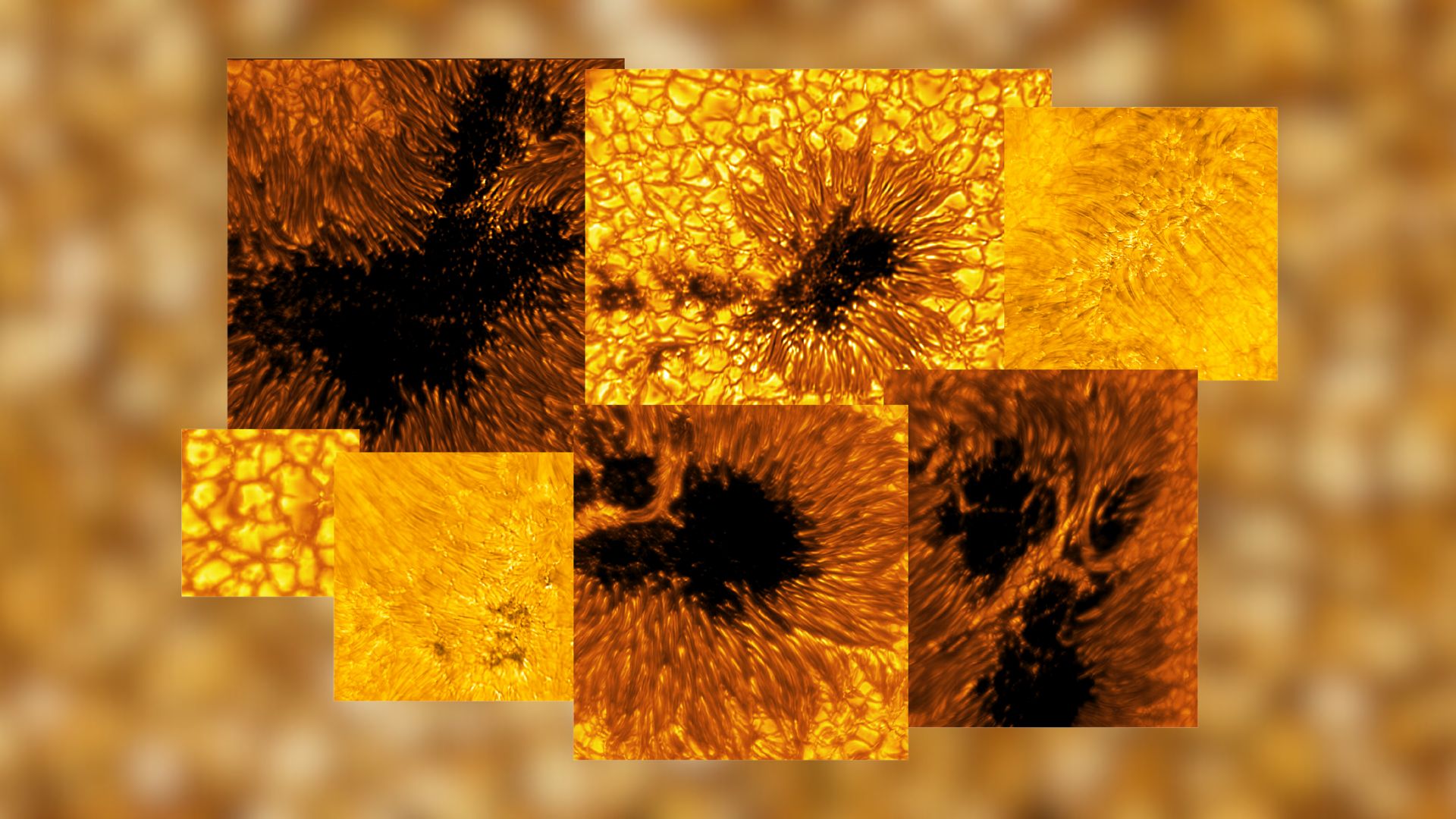Scientists have released eight new images from the state-of-the-art Inoue Solar Telescope in Hawaii. In 2020, this telescope has already taken the most detailed pictures of the sun’s surface. Now we will see a chain with a lot of sunspots.
Our Sun is not only the nearest star, but also a gigantic nuclear reactor that burns five million tons of hydrogen fuel every second. Our Sun has been doing this for about five billion years and there is enough fuel to keep it going for another 4.5 billion years. However, the Sun is not a “dull” ball of gas. Our Sun follows a cycle of approximately eleven years, which is characterized by solar maximums and solar minimums. During solar minimum, the sun is very quiet and generates few sunspots and solar flares. And during peak solar activity, the sun is very active. We are currently approaching a new solar maximum, which means many sunspots can be seen again on the sun.
What are sunspots?
Sunspots are dark areas on the Sun that may be larger than our planet. These regions are a few thousand degrees cooler than the rest of the Sun’s surface. They are caused by disturbances in the strong magnetic field of the neighboring star. When bubbles of hot gas can no longer reach the photosphere – the innermost layer of the sun’s atmosphere – they cool and we see a sunspot. Did you know that sunspots are not actually black? They only appear black because the rest of the Sun’s surface is so bright.
On Earth, sunspots are closely monitored. Large sunspots, or groups of sunspots, can produce solar flares and coronal mass ejections. These coronal mass ejections in particular can sometimes be vicious; During these explosions on the Sun, high-energy particles and magnetic fields are blasted into space. In addition to generating beautiful aurorae, it can also cause damage to satellites in orbit around the Earth, and in exceptional cases – cause problems for our planet.
New images are very sharp
Images were taken using the Visible-Broadband Imager (VBI), an instrument of the Solar Telescope. This instrument provides sharp images of our parent star over a wide range of wavelengths and can observe fine details. This can be clearly seen in the latest photos. For example, a distinct difference is seen between the penumbra (the darker part of the sunspot) and the penumbra (the brighter edge of the sunspot). If you look closely you can even see streaks in the dark. These are penembral strings and are sometimes referred to as “stretch marks”. Click on the images below for an enlarged view.
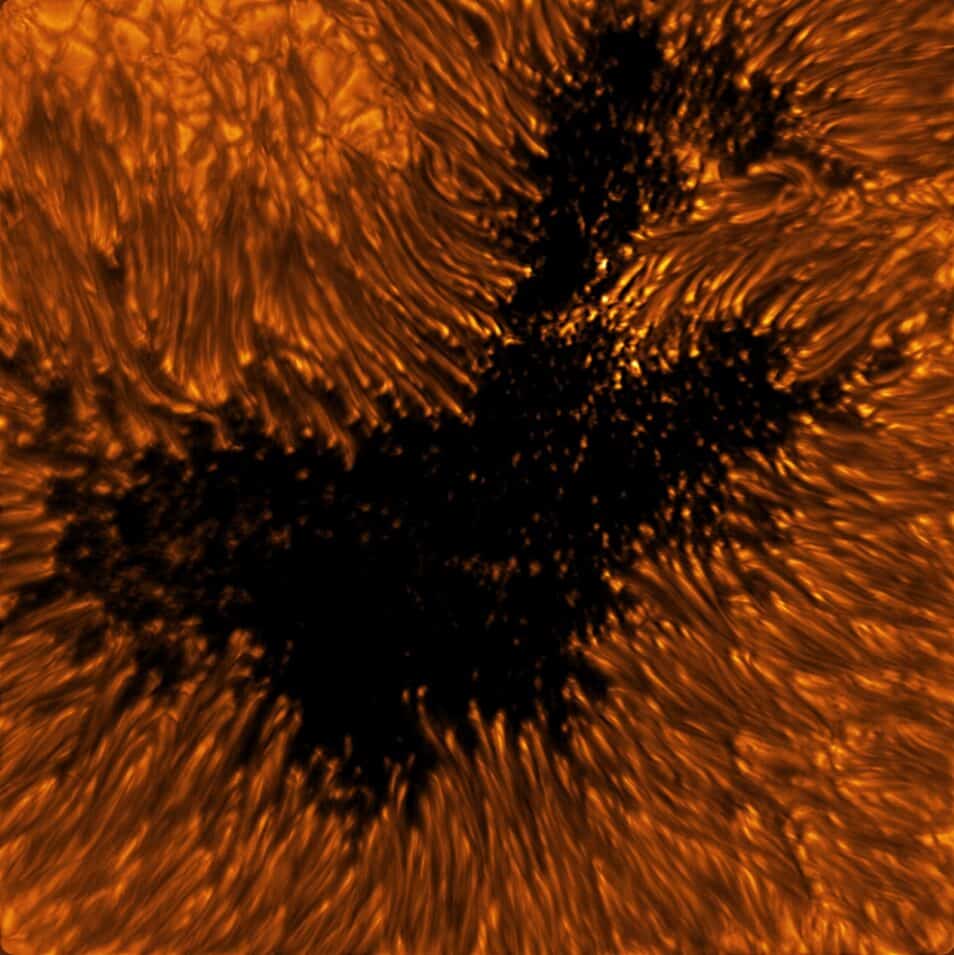
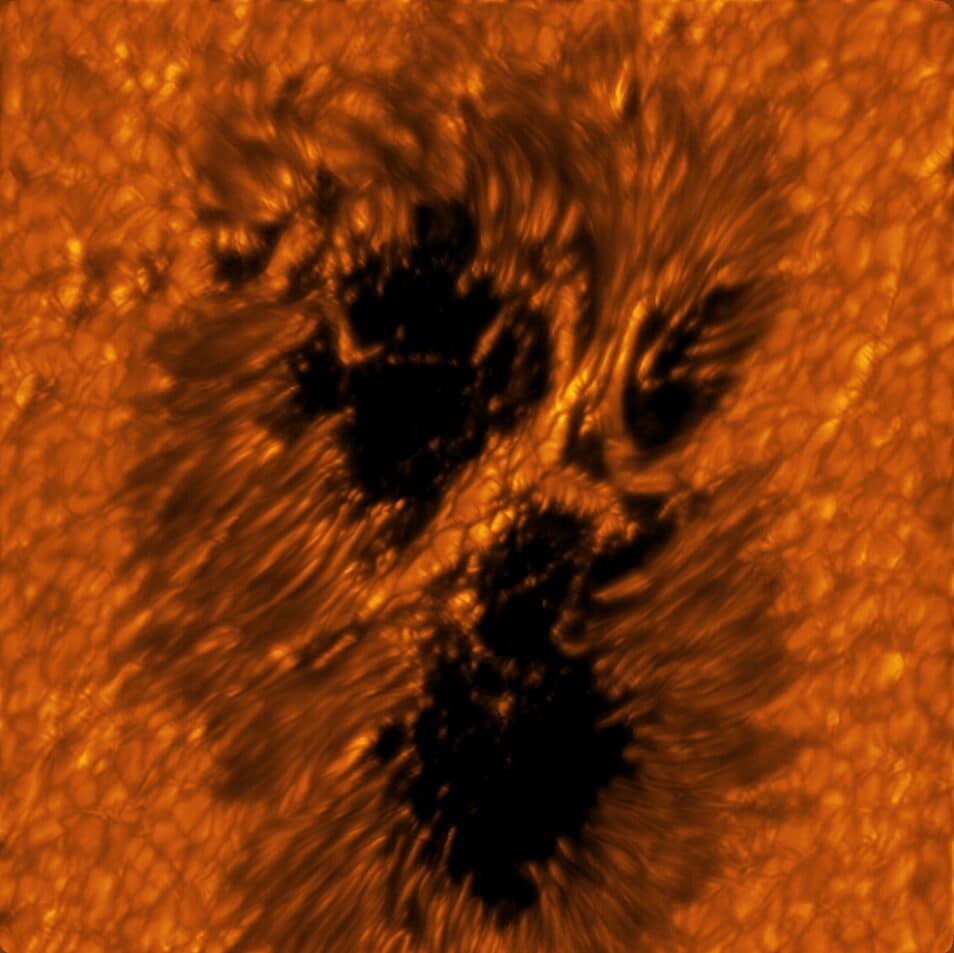
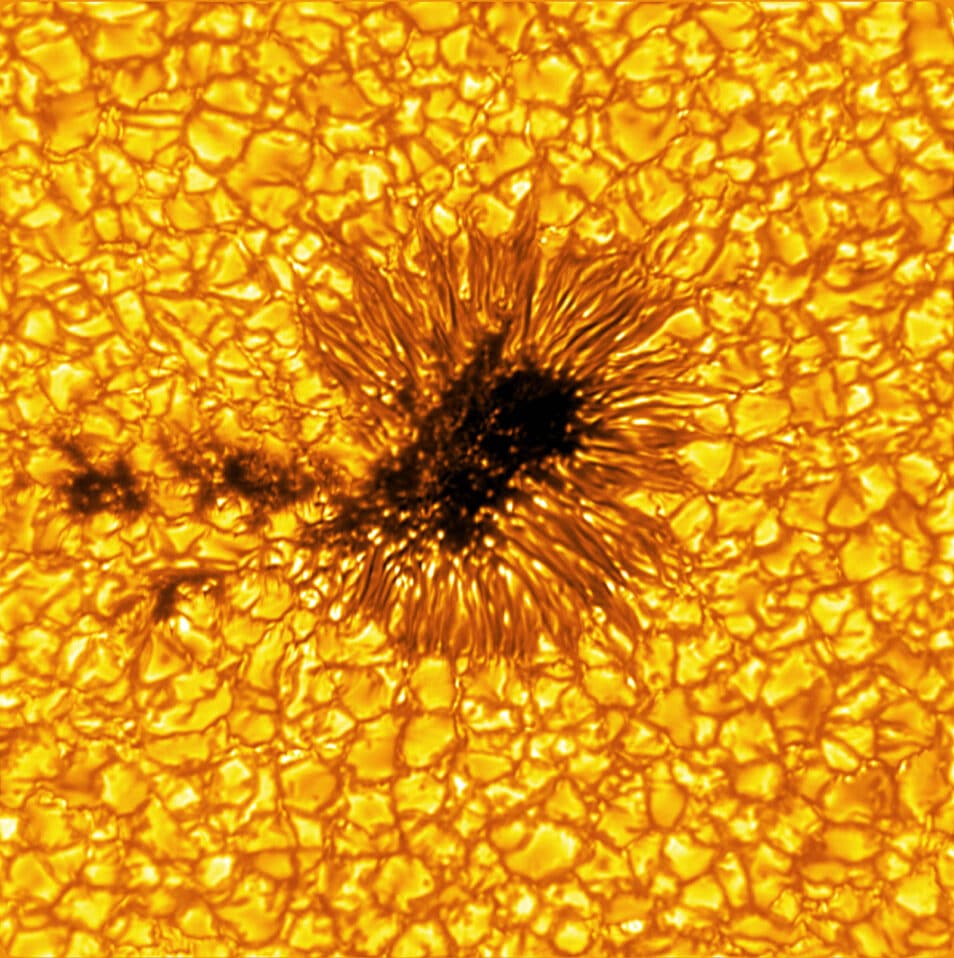
Astronomers are using the latest images to learn more about sunspots. In the last photo, fragments of the parachute can be seen on the left. These are ancient sunspots that have lost their shadows. These fragments were previously part of neighboring sunspots, suggesting that this may be the final stage in sunspot evolution.
More than just sunspots
In addition to sunspot images, we also see other phenomena on the Sun. Below we tell you more about this. Click on the images below for an enlarged view.

Are these corn kernels? No, we’re looking here at the granule cells, or “bubbles” in the photosphere. The heated plasma rises in these granular cells, then cools and falls into the darkened granular passages. These cells appear and disappear within a few minutes. Each grain of corn is actually the size of France.
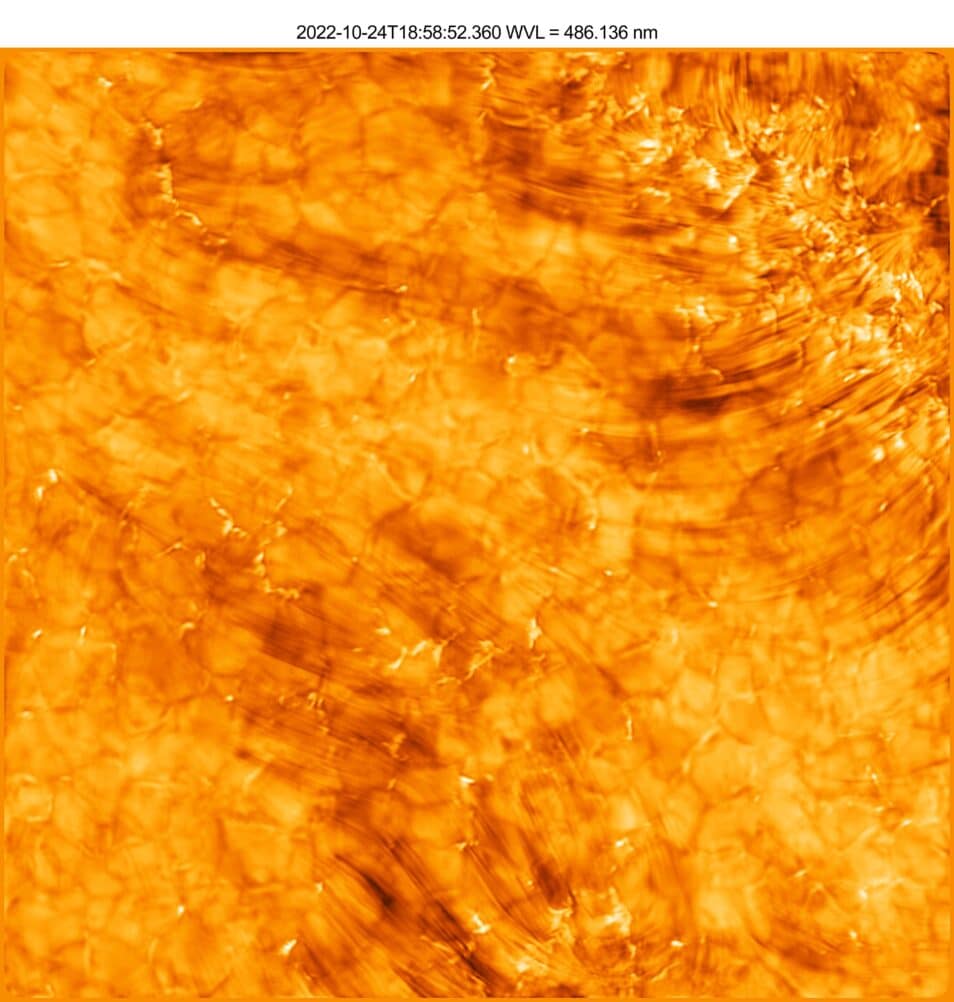
In the Sun’s chromosphere (or atmosphere), fine, dark filaments of plasma can be seen emitting from the underlying magnetic lattice. These so-called fibers can be thousands of kilometers high.
A technological marvel atop a volcano
Located atop the 3,000-meter-high Haleakala volcano in Hawaii, the Inoue Solar Telescope is the largest solar telescope in the world. This telescope features a giant mirror with a diameter of four meters, complete with a specially designed cooling system. This system uses pipelines over eight miles long that carry coolant throughout the observatory. The cooling is partially done using ice, which is produced every night. The dome of the telescope is equipped with cooling panels, so that the temperature in the area around the telescope can be regulated. This is also supported by shutters in the dome, which provide both shade and air circulation perfectly.
We hope to expect more beautiful pictures of the sun in the coming period, especially now that the sun has woken up and we are heading towards the solar maximum. The solar maximum peak is expected to fall in 2024 or 2025.







